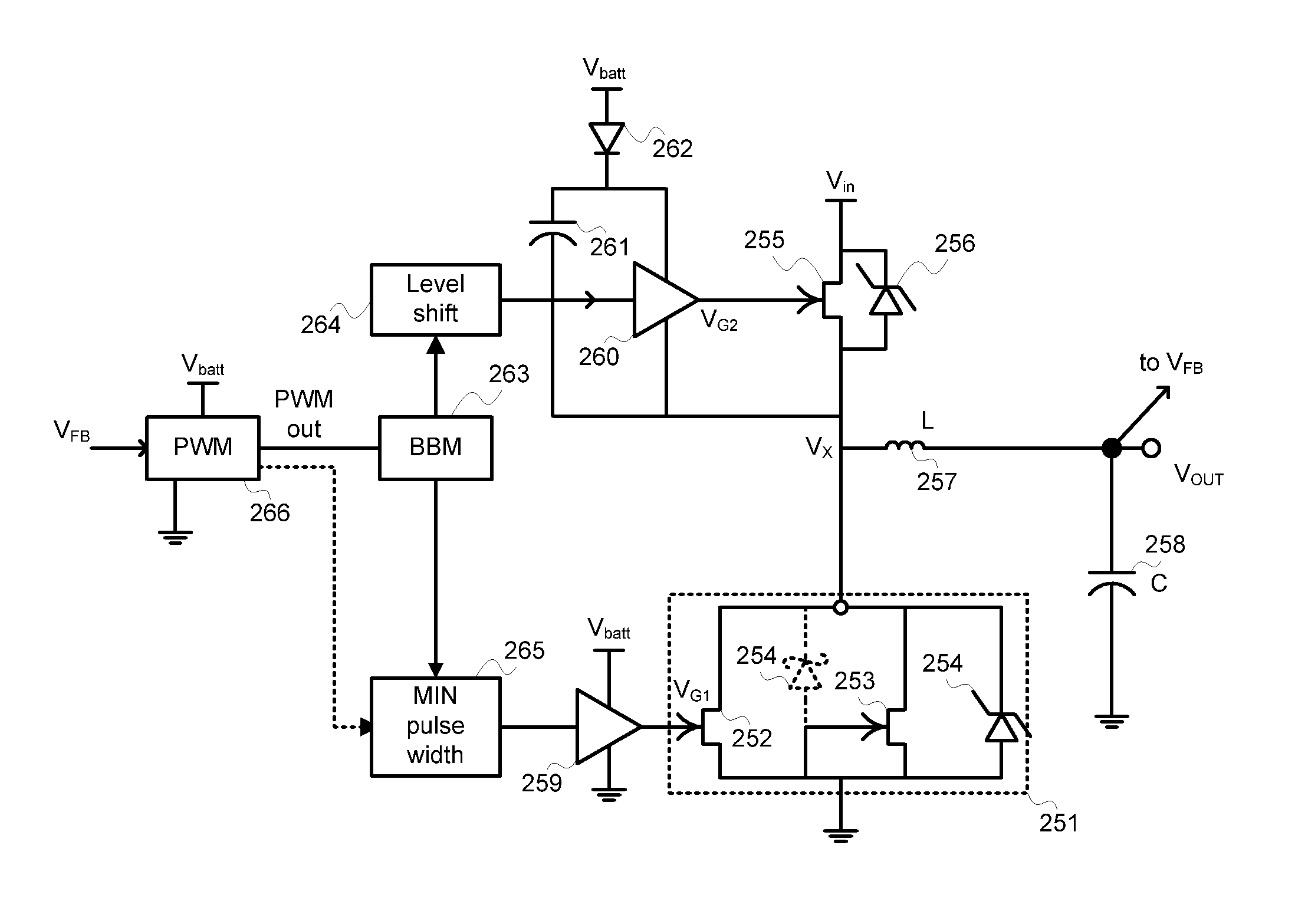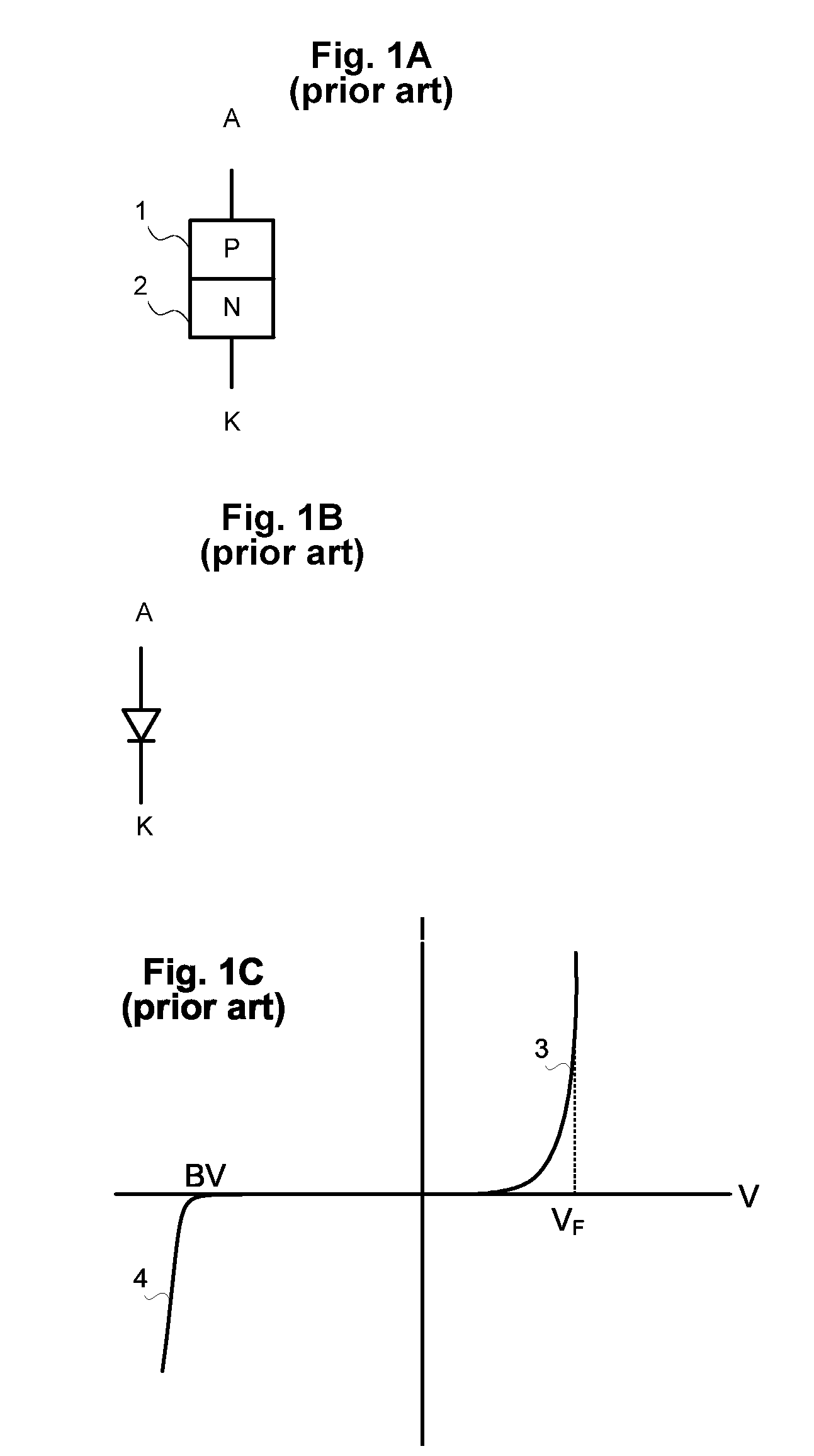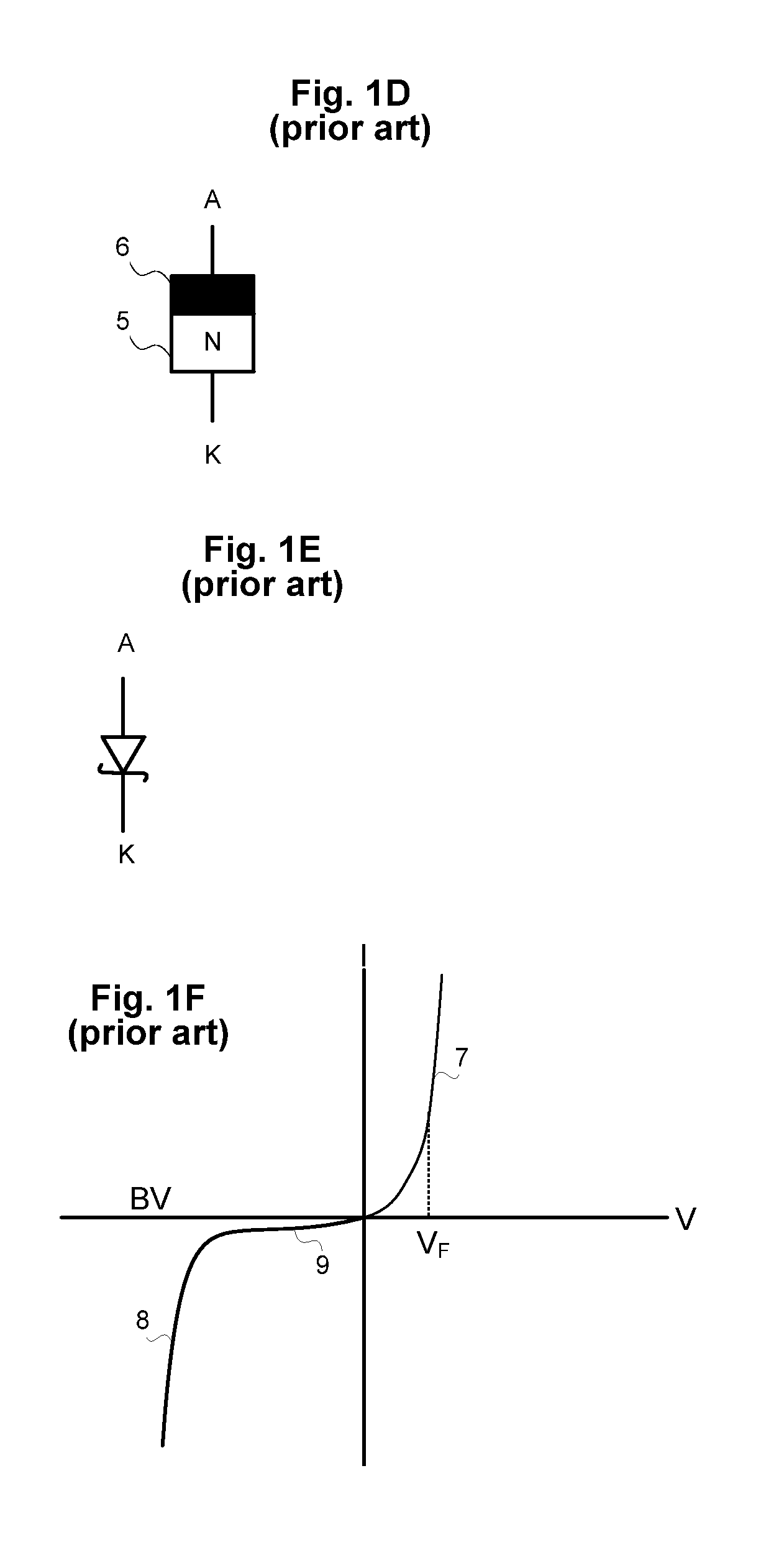Power MESFET Rectifier
a technology of power mesfet and rectifier, which is applied in the direction of electric variable regulation, process and machine control, instruments, etc., can solve the problems of low conversion efficiency, unattractive even in low current applications, and high power loss of p-n rectifiers operating at high current conditions
- Summary
- Abstract
- Description
- Claims
- Application Information
AI Technical Summary
Benefits of technology
Problems solved by technology
Method used
Image
Examples
Embodiment Construction
[0053]Adapting MESFETs for efficient, robust, and reliable operation as rectifiers and as synchronous rectifiers for use in switching power supplies requires innovations and inventive matter regarding both their fabrication and their use. These innovations are described in the related patent applications previously identified. The design and fabrication of power MESFETs for low noise, high frequency operation with rugged avalanche characteristics, especially for use as rectifiers and synchronous in switching converters at frequencies beyond that of normal silicon MOSFETs capabilities, requires inventive matter, which is the main subject of this invention disclosure.
[0054]In another embodiment of this invention, a new MESFET merged device is optimized and used to perform both two-terminal Schottky rectification and synchronous rectification in the same device. In another embodiment of this invention, a gate control method and algorithm is used to switch between rectifier and synchron...
PUM
 Login to View More
Login to View More Abstract
Description
Claims
Application Information
 Login to View More
Login to View More - R&D
- Intellectual Property
- Life Sciences
- Materials
- Tech Scout
- Unparalleled Data Quality
- Higher Quality Content
- 60% Fewer Hallucinations
Browse by: Latest US Patents, China's latest patents, Technical Efficacy Thesaurus, Application Domain, Technology Topic, Popular Technical Reports.
© 2025 PatSnap. All rights reserved.Legal|Privacy policy|Modern Slavery Act Transparency Statement|Sitemap|About US| Contact US: help@patsnap.com



